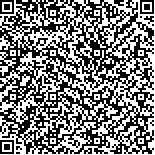| 摘要: |
| 急性心肌梗死是心血管病中的危重类
型,送医不及时死亡风险将大大提高。科学测度
就医可达性能准确评价医疗设施的空间布局,
助力疾病救治和健康城市建设。以急性心肌梗
死患者就医为例,首先基于网络应用接口和人口
大数据精准测度了一天中不同时段下的北京市居
住小区就医可达性,然后基于社会经济地位和
地理探测器分析了就医公平性。研究发现空间
上北京市西南部和北部边缘就医可达性较差;
时间上早高峰的就医可达性最差;昌平区、通州
区可达性受交通拥堵影响严重。研究还发现受
教育年限越短,收入越低以及蓝领工作占比越
高的人群就医时间更长,存在一定的就医不公
平现象。研究利用新技术新数据从疾病防控角
度为医疗资源的合理布局提供了参考。 |
| 关键词: 心梗 医疗设施 可及性 互联网地图 弱势群体 |
| DOI:10.13791/j.cnki.hsfwest.20230201 |
| 分类号: |
| 基金项目:国家自然科学基金资助项目(82073635) |
|
| Research on Accessibility and Equity of Emergency Medical Care: A Case Study of AcuteMyocardial Infarction |
|
SU Yuwei,MA Yue,CHANG Jie,LIU Jing,LONG Ying
|
| Abstract: |
| Acute myocardial infarction is a critical type of cardiovascular disease with rapid onset
and high mortality rate. Without timely medical treatment, patients may suffer from complete
necrosis of myocardium and eventually lead to death due to inadequate blood vessel clearance. Early
Percutaneous Coronary Intervention surgery after acute myocardial infarction can greatly reduce
patient mortality rate. However, according to monitoring data, 12.3% of heart disease patients in
Beijing die on their way to hospitals. Therefore, accurately measuring the accessibility of medical
treatment for acute myocardial infarction, assessing medical fairness, and optimizing the allocation
of medical resources are of great significance to ensure the people's health and life.
This study takes the acute myocardial infarction patient treatment as a simulation scenario, and
explores methods of accurately measuring the accessibility of medical facilities by combining new data
and new methods based on map Web API. The medical accessibility of residential communities in Beijing
at different times of the day is accurately measured by combining big data on population. Then, using the
geographic detector model, the relations between Social Economic Status and acute myocardial infarction
medical accessibility is analyzed, and the fairness of medical treatment from the perspective of spatial
differentiation is assessed. It identifies the deprived groups and regions in the medical treatment space,
and provides research references for optimizing the layout of medical facilities.
This study has three main findings: 1) the overall medical accessibility of residential areas in Beijing is
good. When patients suffer from acute myocardial infarction, they can reach the nearest hospital capable of
performing Percutaneous Coronary Intervention surgery within 120 minutes of the golden treatment time.
However, at different times, medical accessibility shows significant differences. Medical accessibility during
the rush hour (7:00-9:00) is the worst, while medical accessibility at 0:00-7:00 is the best. In addition, the
urban medical treatment spatial pattern has obvious spatial differentiation and aggregation characteristics.
The accessibility in the peripheral areas is significantly different from that in the central urban area, where the
accessibility in the area within the Fifth Ring Road is far better than that outside the Fifth Ring Road. Some
areas in the southwest and north of Beijing have poor accessibility. Furthermore, the population within the
Fifth Ring Road has more medical resources than that outside the Fifth Ring Road, while it is the opposite for
the access to medical resources. There is a certain degree of mismatch between the population and medical
resources inside and outside the Fifth Ring Road. 2) The layout of medical resources is somewhat unfair,
and spatial deprivation of deprived groups appears. Specifically, the higher the average years of education
and family income, the better the medical accessibility, while the longer it takes for people engaged in
blue-collar work to reach medical facilities. Among these factors, the average years of education has the
strongest explanatory power, and both the average years of education and family income have a double-factor
enhancement effect on medical accessibility. This indicates that high-educated groups tend to value living
quality and the supply of medical services more, and they often have higher income and are more able to choose
high-quality residential areas. 3) Rush hour traffic congestion has similar spatial patterns, but affects different
groups. Traffic congestion during rush hour significantly increases the medical treatment time of residential
areas in the north of Haidian District, the south of Changping District, and the south of Chaoyang District. Thetwo rush hours have similar spatial characteristics, with rush hour traffic congestion being more severe during the morning rush hour. However, the residential areas where
medical accessibility is prolonged during the morning rush hour have higher average family income and education level and lower proportion of blue-collar workers than the
overall average, while the residential areas affected during the evening rush hour have lower average family income and education level and similar proportion of blue-collar
workers to the overall average, indicating that the affected population during different rush hours has characteristics different socioeconomic conditions.
The problems found in this study can provide decision-making references for the spatial optimization of medical facilities and the alleviation of road
congestion, and can also support the optimization of the process of sending acute myocardial infarction patients to hospitals, and provide reference for the
treatment of similar critical illnesses. In addition, special attention should be paid to the issue of medical fairness for low-educated individuals, low-income
individuals, and blue-collar workers. By accelerating urban planning to improve the supply level of medical facilities and other public services in residential
areas of these groups and the external traffic environment, social equity can be promoted. |
| Key words: Acute Myocardial Infarction Medical Facilities Accessibility Internet Map |


